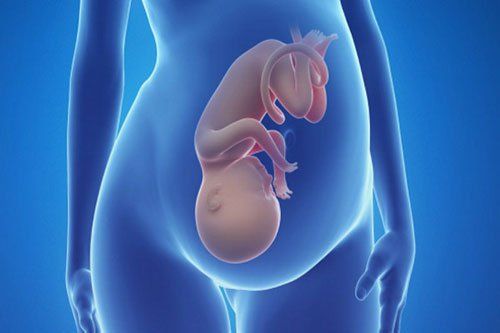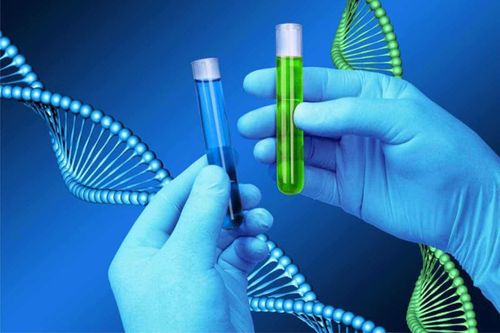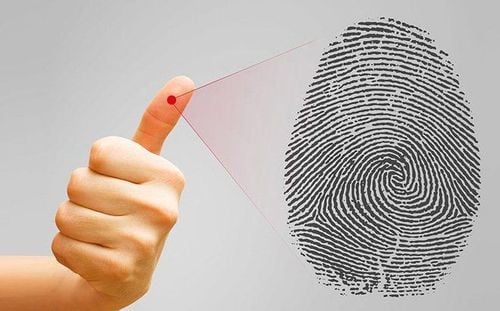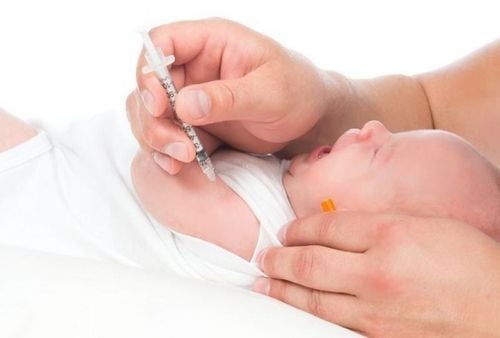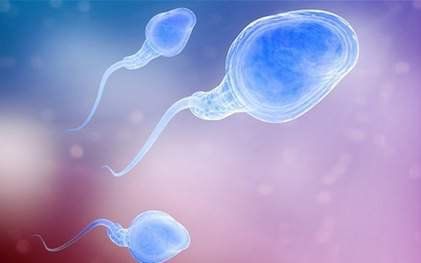This is an automatically translated article.
The DNA test samples are diverse and have the same accuracy as: Blood samples, cells of the oral mucosa, tissue samples, fingernails, hair roots, umbilical cords, bones, teeth,... If the parent and child's DNA samples match in each gene, up to 99.999% of the two specimen owners are related by blood.1. What is DNA? What is a DNA test?
DNA (deoxyribonucleic acid) is a substance that exists in the nucleus of cells and on chromosomes that is responsible for storing the genetic information of each organism. A gene is a piece of DNA that carries genetic information.DNA test is a test that uses DNA found in the cells of the body to determine the blood relationship between two individuals because the DNA of an organism is inherited from both parents and regulates the unique characteristics of each individual. This is the most accurate way to check blood relationship.
With DNA samples of parents and children matching each other in each gene, up to 99.999% of the two specimen owners are related by blood. Meanwhile, if two DNA samples do not match with each other from 2 or more genes, these two samples are absolutely not related by blood. However, in the case of two men who are identical twins (with identical genomes), it is not possible to determine who is the sperm supplier for the child.
2. What samples can be used for DNA testing?
The DNA test samples are diverse and have the same accuracy as: Blood samples, oral mucosal cells, tissue samples, fingernails, hair roots, umbilical cords, bones, teeth,...Paternity testing can be done at any age because the human genome is established at the moment of conception and usually remains unchanged, and can even be obtained from an unborn child such as amniotic fluid. Contains fetal cells.
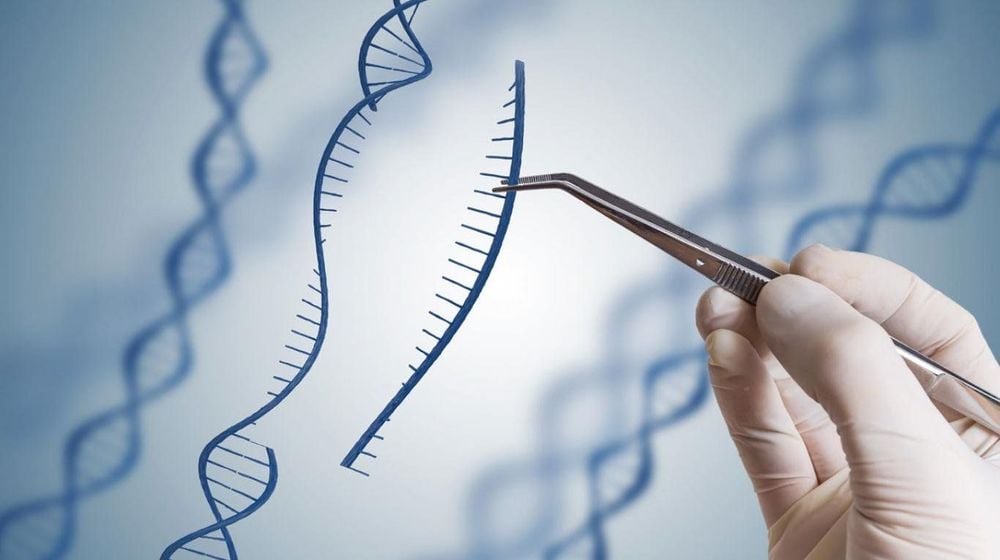
Xét nghiệm ADN có thể dùng những mẫu bệnh phẩm nào?
3. Method of using blood samples for DNA testing
Using a blood sample for DNA testing is a popular way to test bloodline because of its high stability, undenatured DNA, and quick response time. Steps to take a blood sample for DNA testing include:Contact the medical center to be prepared with the necessary sampling equipment. Thoroughly wash your hands before sampling Prepare a sampling stylus, sterile tip, and paper to collect the sample Write the name of the person to be analyzed for DNA on the blood sample card containing the test paper Wipe the middle finger with a cotton swab alcohol, heel spur can be drawn for children under 1 year of age Insert the tip into the stylus and remove the guard Perform blood sample collection by gently placing the tip of the pen on the tip of your finger and pressing the side button. The tip of the blood collection tip is usually not painful. Squeeze the tip of the finger gently until a drop of blood is collected. Place your finger in the circle of the collection paper so that the drop of blood penetrates the paper. alcohol swab and hold in place at extraction site until blood stops seeping. Let the blood collection paper dry naturally for 10 minutes and then fold it up and place it in a separate signed envelope. Need the next DNA analysis Fill in the information on the request for DNA analysis and then send it to the medical center and wait for the results.
4. DNA testing by oral mucosal cell samples
The test using oral mucosal cells is applicable to all ages and can be performed at home with the same accuracy as other methods. Steps to take oral mucosa samples include:Preparation stage for sampling do not drink coffee, tea, milk or smoke (before 4 hours) because it may affect sample quality Wash hands and rinse mouth before sample 3 times with warm water (in infants need to wait 2 hours after the last meal and give the child some water to clean the mouth) Take a sterile cotton swab from the pouch, cut off one end, care should be taken Do not touch the cotton tip of the cotton swab. Collect oral mucosal cells (cells of the inner cheek) with the tip of a cotton swab. Sweep the tip of the cotton swab and gently rotate it about 30 times or for 30 seconds on the inside of the person's cheek, needing to move the swab over the entire inner surface of the cheek Repeat this process with other cotton swabs with a minimum of 3 swabs per person Allow the sample to dry in air at room temperature for at least 15 minutes, taking care not to touch anything with the tip to avoid contamination. Place the swab in the sample container and Make sure all necessary information is on the packaging Repeat the steps above for those who need to collect samples and use a different set of swabs and envelopes to avoid confusion Once all DNA samples have been collected from those to be analyzed DNA analysis, put everything in a large envelope and send it to the testing center
5. DNA test with a hair sample with roots
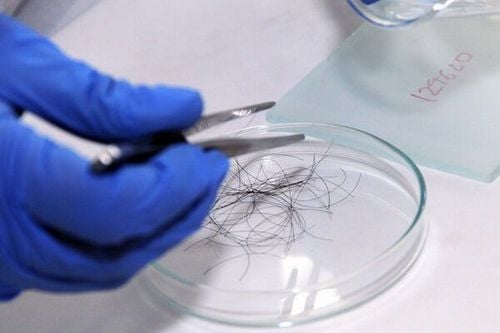
Xét nghiệm ADN bằng mẫu tóc có chân
Prepare 2 to 3 envelopes with the name of the person to be analyzed and the relationship on the envelope Pull 5-7 hairs with hair roots and put on white paper (usually A4 paper) , do not use soft tissue paper to wrap the hair) so that the base of the hair sticks to the sheet of paper. Wrap it carefully in A4 paper and write the information of the model donor with the signature on the outside, then put it in an envelope with the information. Corresponding information Repeat these steps with the next person to be sampled. Put all sample bags together in a large envelope with the request for analysis to send to the analysis center.
6. DNA test with umbilical cord sample
Steps to follow include:Cut about 1cm of dry, clean, fallen umbilical cord. Pack it carefully in A4 paper, then write information about the person giving the sample and signature outside, then put it in an envelope with the corresponding information. The entire sample bag is placed in a large envelope with the request for analysis and sent to the analysis center
7. DNA test with nail and toenail samples
How to take a nail sample for DNA testing includes the following steps:Wash the donor's fingernails and toenails before cutting Cut and combine all fingernails and toenails (minimum of 40mg) of a routine clipping Carefully pack Carefully take a piece of A4 paper and write the donor information with the signature on the outside and put it in an envelope with the corresponding information Put all sample bags in a large envelope with the request for analysis and send it to the analysis center. volume
8. DNA test with amniotic fluid sample or chorionic villus biopsy
Except in special situations, amniotic fluid samples should not be collected because during amniocentesis there is a certain risk of causing miscarriage. This amniocentesis or biopsy should also be performed by a qualified physician at a licensed amniocentesis hospital. Amniocentesis is only performed as early as the 15th week of pregnancy, the doctor will amniocentesis to collect 2-5ml of amniotic fluid for testing.Please dial HOTLINE for more information or register for an appointment HERE. Download MyVinmec app to make appointments faster and to manage your bookings easily.




